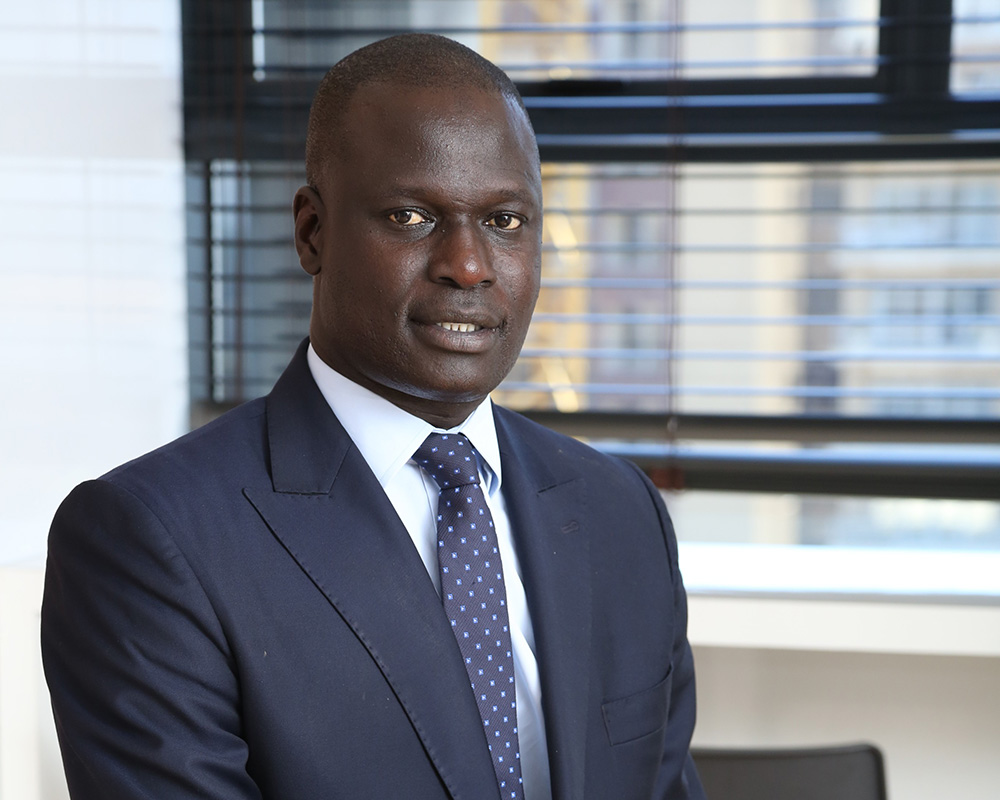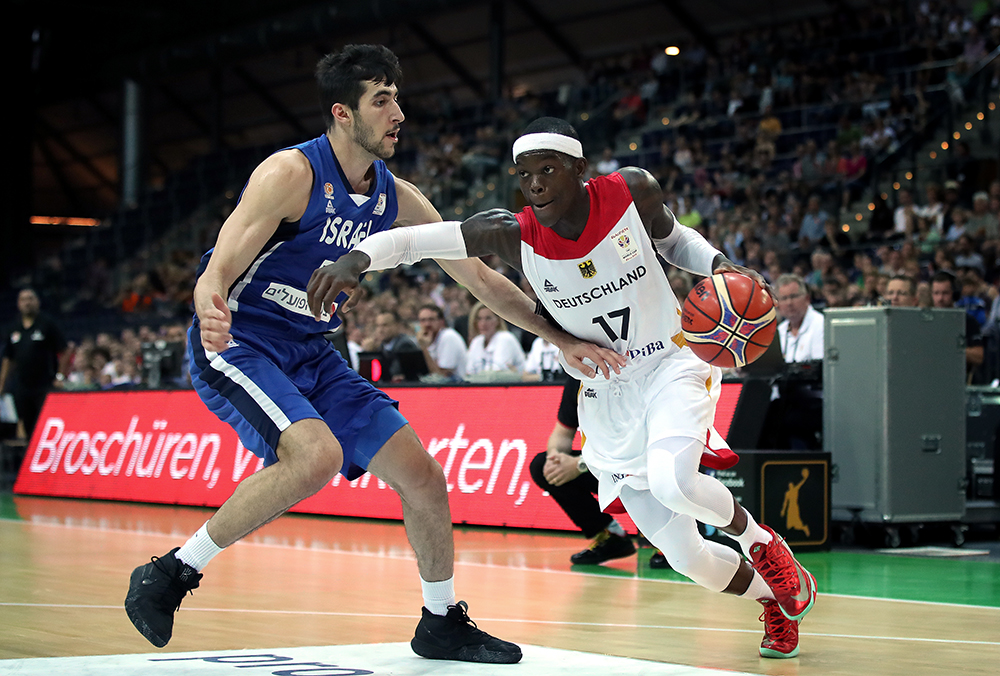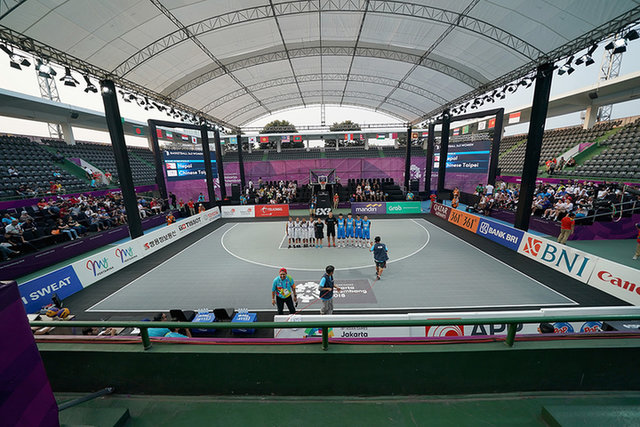Playing the Global Game
Simon Ward speaks to FIBA secretary general Andreas Zagklis about bringing basketball to new markets and the importance of strategic partnerships.
International federations committed to growing and increasing opportunities in their sport often make uncomfortable bedfellows with major leagues whose priority is to expand their own footprint and business.
FIBA, the international basketball federation, and North America’s NBA, the sport’s top league, are bucking the trend, however, as they look to cultivate the game in new markets, a dual goal manifested in joint projects such as the Basketball Africa League set to launch early in 2020.
The collaboration comes as FIBA, which has 213 member associations worldwide, looks to raise the profile of national team basketball, fuelled by the introduction of international windows during the club season, and the staging of the 2019 Basketball World Cup in China earlier this month.
The current relationship between FIBA and the NBA is a legacy of the agreement reached between the former’s then secretary general Borislav Stankovic and the latter’s long-time commissioner David Stern 30 years ago that paved the way for professional players to compete in the Olympic Games, highlighted by the appearance of the US ‘Dream Team’ at Barcelona 1992.
“The most recent BWB Africa was held in Senegal at the end of July, and involved the top 60 boys and girls aged 17 and under from 29 countries, with Nike, the kit supplier of the NBA, acting as the official partner.”
Subsequent initiatives have included Basketball Without Borders, FIBA and the NBA’s global development and community outreach programme, which has staged some 60 camps in cities in 30 nations and helped produce 68 NBA players over the past 18 years, and the Jr. NBA programme that now oversees grassroots competitions for young players in more than 75 countries worldwide.
Speaking to Sportcal Insight ahead of the World Cup, Andreas Zagklis, the FIBA secretary general, says: “The NBA is a strategic partner for FIBA. We have come a long way since the famous handshake between Stankovic and Stern in the [19]80s. Right after that FIBA changed its statutes, even its name so the 'A' no longer stands for amateur, it’s 'BA' for basketball in our acronym. That was the agreement which allowed the NBA players to participate in our tournaments. And Barcelona 92 happened as you know, with the Dream Team. Then, in 2001, we started Basketball Without Borders, the youth camps that we organise around the world.”
The most recent BWB Africa was held in Senegal at the end of July, and involved the top 60 boys and girls aged 17 and under from 29 countries, with Nike, the kit supplier of the NBA, acting as the official partner.
Zagklis, who hails from Greece, adds: “We’ve also collaborated on the grassroots programme Jr. NBA because we believe in combining the investment that the NBA is making in this programme with our coaching manuals and including in their curriculum references on how important it is to play for the national team, and to wear the jersey, and not only the logo of one of the [NBA’s] 30 franchises, which is a dream of so many kids around the world.”

The NBA's Amadou Gallo Fall is the president of the new Basketball Africa League
Building on BWB, Jr. NBA and the NBA Africa games staged in South Africa in recent years, the BAL will be the first professional league to be operated by the NBA outside North America, with FIBA providing support based on its more than 50 years of experience on the African continent.
The competition will involve 12 club sides from across Africa, competing in six cities, with support from Nike and its affiliate Jordan Brand. Kigali in Rwanda will stage the first-ever BAL final four and final.
The BAL is being headed up by Senegal’s Amadou Gallo Fall, the NBA’s vice-president and managing director for Africa, as president, and Mozambique’s Anibal Manave, a vice-president of FIBA Africa and a member of FIBA’s central board, as president of the league’s board.
There have been signs of improvement in African basketball, with Mali finishing as runners-up to USA in the 2019 FIBA Under-19 Basketball World Cup, Senegal’s victories over Croatia and Puerto Rico at the senior event in 2014, and Nigeria reaching the quarter-finals of the 2018 Women’s Basketball World Cup following a memorable win over Greece.
In addition, under FIBA’s continental rotation policy for the presidency of the federation, Africa will have a senior official at the helm of world basketball, with Mali’s Hamane Niang having been elected unopposed to succeed Horacio Muratore at the end of August, while FIBA Africa this year opened a new headquarters in Abidjan in the Ivory Coast.
However, Zagklis sees the BAL as necessary to drive the development of the club game in Africa, saying: “The point is that in order to grow the sport of basketball, you need both legs, the club league system and the national system, to be very strong. You have the number one league in the world, the NBA, which is a very progressive and global league, and they see on that continent huge potential, both in player talent and commercially. And we see in Africa great potential for us to become the number one sports community, which is also our global vision.”
He believes that the new African competition will help to foster talent for the national teams, and encourage players to remain on the continent, at least until they are ready to take their skills to the major leagues.
“They can play there for more years and develop and when the call-up comes from the NBA or from a top team in China or in Europe, of course it’s a free market and they can open their wings," says Zagklis. "But opening your wings too early, and leaving at the age of 16 or 17 for a doubtful opportunity is not always ideal.”
While NBA commissioner Adam Silver has said that several team owners are keen to work with the league in Africa, Zagklis denies that the priority of the BAL is to develop players for the North American league, saying: “We want more and better quality talent reaching professional level. Does this mean more players for the NBA? This is for the NBA to evaluate, but the more leagues of high level we have will be excellent for one leg we’re standing on, and will be reflected when it comes to the World Cup. We will have a better World Cup, a better EuroBasket, AfroBasket, and America and Asia [competitions].”
“I think our mission of making basketball the most popular sports community and the NBA's vision of making their league a global product is very much aligned.”
The closer ties between FIBA and the NBA are reflected by the fact that, following changes to the international federation’s statutes in 2014, Mark Tatum, the NBA deputy commissioner, sits on the central board and the executive committee.
Hailing the benefits of this integration, Zagklis says: “The most important thing in the relationship between the federation and leagues is strategic alignment. Because by nature the leagues are commercially driven entities and we are a non-profit developmental entity. When we can find the right balance in strategic alignment, we can do great things together.
“I think our mission of making basketball the most popular sports community and the NBA’s vision of making their league a global product is very much aligned, and that's why we have been working on more projects and more in-depth projects around the world.”
Zagklis, a trained lawyer who was formerly FIBA’s general counsel and director of legal services, became the federation’s fourth secretary general last December, albeit in tragic circumstances, succeeding Patrick Baumann who had died suddenly of a heart attack, aged 51, while attending the 2018 Youth Olympic Games in Buenos Aires.
The multi-lingual Greek is well-versed in the governing body’s activities having served as its external legal adviser for nine years prior to coming on board in a full-time capacity in 2016, and has been described by Muratore as “a true basketball person.”
Zagklis has continued Baumann’s drive to promote national teams, extolling the introduction of windows for qualifying matches for major competitions in November and February, on top of those in June and September, in the 2017-18 season onwards.
These games are included in the 17-year, €500-million ($562-million) tie-up entered into by FIBA and Perform (now DAZN Group), the international digital sports rights group, in 2016, which created FIBA Media, an entity dedicated to the production and worldwide distribution of national team basketball, including the quadrennial World Cup.
“One of the reasons we are investing a lot in our second leg, the national teams, is because we have the possibility to attract a mainstream audience, not [just] the hardcore basketball audience,” says Zagklis. “This is where the people who would not always go to a club game would go and watch.”

There have been clashes between Basketball World Cup qualifiers and top club games in Europe
There have been clashes between Basketball World Cup qualifiers and top club games in Europe.
While FIBA has hailed attendance and TV viewing figures for the World Cup qualifiers, the introduction of the new windows did bring complications, with Euroleague Basketball, the organiser of the top European clubs competition, refusing to amend its calendar to avoid fixture clashes, with the result being that many players felt unable to turn out for their national teams.
The clash prompted a war of words and threats of legal action, but FIBA appears to have adopted a more conciliatory stance under Zagklis who has called for greater collaboration among basketball stakeholders, to benefit both national teams and clubs.
The international federation also announced that, in the interests of federations, leagues and players, the period of preparation for teams competing at the Tokyo 2020 Olympics had been reduced to 28 days, and that the number of windows for qualifying games for continental championships in 2021 had been cut from four to three.
Zagklis says: “We are taking steps from our side to show what I believe everyone has understood, that the qualifiers during the club season were there to strengthen not only the national federations, but the club game as well. I am a firm believer in this synergetic approach that national team games and club games during the season benefit each other.
“Following that phase we will have to enter a phase of discussions where we need to see strategies gradually align. If we align the strategies, meaning that we understand that what we do is good for basketball, and what our leagues do is good for their clubs of course, but also for the growth of the sport, then I think the way is open for solutions.”
Another stated priority of the FIBA secretary general is the women’s game, which has long lived in the shadow of men’s basketball, but looks set to benefit from increased investment and attention, at both national and club level.
Zagklis says: “We will be looking more and more at the participation of women in basketball in the next years. I have already given certain signals to the basketball family. I was the first secretary general to have attended the Euroleague Women Final Four in Hungary. It was a great event that in terms of the rosters could have been the final of the Olympic Games with the level of players you had there.
“Then I went to Latvia for the group phase of EuroBasket Women, and to the final phase in Belgrade. Of course, I was in Tenerife [in Spain] for the [2018 Women’s Basketball] World Cup.”
He sees significant interest in the sport, pointing to the crowd of 10,500 for the EuroBasket Women semi-final between co-hosts Serbia and eventual champions Spain, and stresses that moves are being undertaken to ensure a higher proportion of female spectators, coaches and referees.
Zagklis says: “That’s why I was careful in how I phrased it earlier. I didn’t say women’s basketball, I said women in basketball, because it is important to see more women coaching, very important. It is very important to see more women attending the games.”

“3x3 has potential both at the elite level and at the grassroots level, and we have just started to scratch the surface of it.”
Baumann, a senior figure in Olympic circles, played a key role in 3x3 basketball, the three-a-side version of the sport, being added to the programme for Tokyo 2020, and his successor believes the discipline can be a stimulus for growth across the board.
“3x3 has potential both at the elite level and at the grassroots level, and we have just started to scratch the surface of it,” says Zagklis. “On the elite side it does offer the possibility to countries that don't have a big pool of high-level talent to make it to the Olympics.
“On the grassroots side, this is our opportunity to bring the millions of non-licensed people that play basketball outside the club structure into the FIBA family through the platform. Every single player can have a login and account and register, and play three against three, and record the results of a pickup game, and get ranking points.”
The short format enjoys regular exposure with the FIBA 3x3 World Cup taking place every year, and the 2019 FIBA 3x3 World Tour comprising a record 11 events.
It was announced in June that Los Angeles, the host of the 2028 Olympics, is to stage the World Tour Final from 2020 to 2023, with the Los Angeles Times media group acting as backer.
The 3x3 discipline is of particular interest to media and sponsors because of its appeal to young people (it has featured at all three Youth Olympics since 2010), inner-city outdoor venues and the short length of the games.
Zagklis says: “3x3 has this urban flair, and can be played in the big metropolises of this world, and bring together people in the centre of the city. We usually play basketball in enclosed venues and these venues are not always in the middle of the city."
He adds: “It is interesting for the broadcasters because you have a full game in 15 minutes so is a much shorter version… We have taken a very open approach so you can watch virtually everything from our events on YouTube and the figures are really, really good. You know the short attention span of viewers now so there is a lot of interest. They [the broadcasters] say, ‘ok, here we can capture their attention for 15 minutes, and a full game.’”